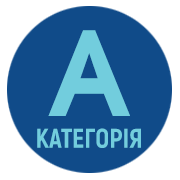THE EFFECT OF COLLAGEN HYDROLYZATE ON WOUND HEALING IN THE CONDITIONS OF EXPERIMENTAL MODELING OF THE COURSE OF THE WOUND PROCESS IN RATS
DOI:
https://doi.org/10.32782/2226-2008-2025-2-2Keywords:
rats, wound, regeneration, collagen, wound treatmentAbstract
Despite the existence of multiple trends toward chronic wounds treatment, certain misunderstandings regarding the regeneration of connective tissue determine the need to address this problem.The aim of the study was to determine the features of post-traumatic regeneration in experimental conditions of collagen hydrolysate complex applying.Materials and methods. In the rats of the main group (13 (43.3%)), hydrolyzate of collagen was applied to the treatment process, in the comparison group (17 (56.7%)), the regeneration processes took place without additional influence.Results. Significant differences in the formation of the microcirculatory system began to be observed from the 7th day. The differences in capillary density were statistically significant. The same situation in the density of newly formed capillaries on the 14th day of the experiment was detected. In addition, on the 28th day after the injury, the main group of animals demonstrated more expressed collagen formation and more mature connective tissue development. In contrast, the comparison group of animals showed developing granulation tissue with slower maturation and a significantly higher presence of residual inflammatory infiltrate. Newly formed nerve trunks were predominantly observed in the group of animals treated with collagen. Conclusions. The effectiveness of collagen hydrolyzate to improve post-traumatic regeneration processes was demonstrated in an experimental model of induced wound process.
References
Mirhaj M, Labbaf S, Tavakoli M, Seifalian AM. Emerging treatment strategies in wound care. Int Wound J. 2022; 19(7): 1934–1954. DOI: 10.1111/iwj.13786.
Kolimi P, Narala S, Nyavandi D, Youssef A, Dudhipala N. Innovative Treatment Strategies to Accelerate Wound Healing: Trajectory and Recent Advancements. Cells. 2022; 11(15): 2439. https://doi.org/10.3390/cells11152439.
Farahani M, Shafie, A. Wound healing: from passive to smart dressings. Advanced Healthcare Materials. 2021; 10(16): 2100477. https://doi.org/10.1002/adhm.202100477.
Freedman BR, Hwang Ch, Talbot S, et al. Breakthrough treatments for accelerated wound healing. Sci. Adv. 2023; 9: eade7007. DOI: 10.1126/sciadv.ade7007.
Niculescu AG, Grumezescu AM. An Up-to-Date Review of Biomaterials Application in Wound Management. Polymers. 2022; 14(3): 421. https://doi.org/10.3390/polym14030421.
Sharma S, Rai VK, Narang RK, Markandeywar TS. Collagen-based formulations for wound healing: A literature review. Life Sciences. 2022; 297: 120436. https://doi.org/10.1016/j.lfs.2022.120436.
Parizad N, Hajimohammadi K, Goli R. Surgical debridement, maggot therapy, negative pressure wound therapy, and silver foam dressing revive hope for patients with diabetic foot ulcer: A case report. International Journal of Surgery Case Reports. 2021; 82: 105931. https://doi.org/10.1016/j.ijscr.2021.105931.
Thomas DC, Chong Li Tsu, Nain R A. The role of debridement in wound bed preparation in chronic wound: A narrative review. Annals of Medicine and Surgery. 2021; 71: 102876. https://doi.org/10.1016/j.amsu.2021.102876.
Nowak M, Mehrholz D, Barańska-Rybak W, Nowicki RJ. Wound debridement products and techniques: clinical examples and literature review. Advances in Dermatology and Allergology/Postępy Dermatologii i Alergologii. 2022; 39(3): 479–490. https://doi.org/10.5114/ada.2022.117572.
Tran DL, Huang R-W, Chiu E, et al. Debridement: technical considerations and treatment options for the interprofessional team. Advances in skin & wound care. 2023; 36(4): 180–187. DOI: 10.1097/01.ASW.0000920660.07232.f7.
Parkhomenko K, Tsivenko O, Shmorhun V, Briukhanova T. Vacuum-therapy in the complex treatment of gunshot wounds: current aspects and prospects (review). Journal of V. N. Karazin Kharkiv National University. Series 'Medicine'. 2023; 46: 89–100 (in Ukrainian). DOI: https://doi.org/10.26565/2313-6693-2023-46-10.
Khomenko IP, Barkovskyi AS, Tertyshnyi SV, et al. The concept of using platelet automeso-concentrate in the complex rehabilitation of servicemen after gunshot wounds with defects of integumentary tissues. Clinical and Preventive Medicine. 2024; 8: 104–113 (in Ukrainian). https://doi.org/10.31612/2616-4868.8.2024.12.






